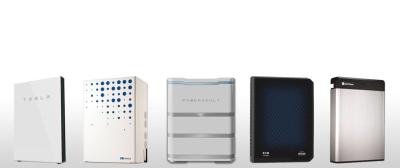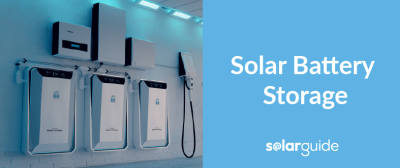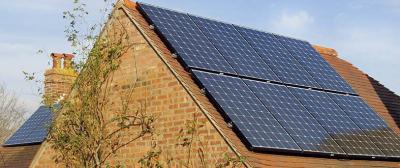Feed-in Tariff - How Does it Work in 2019?

If you are eligible to receive the Feed-In Tariff you will benefit in three different ways. Not only will you receive a payment for the Generation tariff and the Export tariff, you'll also reap big savings on your energy bills.
By generating the electricity yourself to power your home appliances you do not have to buy all of your electricity from an energy supplier. The other big benefit is that you will actually make money from exporting the generated energy you don’t use to the power grid.
Get Free Solar Panel Quotes: Get quotes and compare prices.
Generation Tariffs
The generation tariff is a payment made by the energy supplier for each kWh of electricity your installation generates. This rate fluctuates with inflation and will change each year for new entrants to the scheme (except for the first two years), but once you join you will continue to receive the tariff for 20 years.
The payment received depends on the size and type of technology you're using rather than being a set rate, and solar PV is capable of producing some of the most profitable energy figures.
Export tariffs
The export tariff is a bonus payment for every kWh of electricity you generate but don't use and then export to the electricity grid. The payment has a set 'floor price' of 5.24p per kWh, which can be opted out of to negotiate a new price with your energy supplier, that you export back and the electricity supplier then delivers the electricity to another customer.
The tariff has been designed as an extra incentive to encourage people that they will still receive money for any surplus electricity they generate.
Who do I receive the payments from?
The money you receive for both the Generation and Export tariff doesn't come from the government - it is actually paid by the energy suppliers. The suppliers pass on the cost of the Feed-In Tariff to their electricity customers, essentially making traditional energy consumers pay for your self-generated electricity.
All the costs are spread equally across all the energy companies but there is the option for smaller suppliers to reject tariff customers.
Best Feed-in Tariff Companies
The big six energy companies in the UK are required by law to offer the Feed-in tariff to both homes and businesses:
If you're a customer of a smaller independent supplier you will need to check whether or not they make FiT payments as they are not legally required to do so*. However, it's worth noting that you don't need to get your FiT payments from the same company that you buy your energy from so you may want to do some research around which are the best companies offering the FiT. They will all pay exactly the same amount of money but you may find a difference in their levels of customer service and how quickly you'll start receiving your payments.
Some key points to think about and to ask your supplier are:
Asking these questions of a few different suppliers will give you a sense of where you're likely to get the best service and whether you're using someone other than your energy supplier.
For example, the big six specify the following maximum payment times in their terms and conditions:
Applying for the Feed-in Tariff
1. After your solar panels have been installed by an MCS accredited installer you'll be given a certificate to prove it's eligible for the FiT scheme.
2. You should then contact your energy company and tell them you would like to register for FiT payments.
3. Your energy supplier will confirm that your solar panels are eligible and check the MCS database.
4. You may need to complete an application form and sign a contract with the supplier. Assuming all is in order, your details will be added to the OFGEM Central FiT Register.
5. The supplier may ask about a meter reading process and whether or not you would like to receive the export tariff. If you choose to sell unused energy back to the grid you'll be paid 5.24p for each kWh, but buying the same amount of energy back from your supplier will cost around 14-15p. For that reason you feel it's more economical to keep hold of as much of your unused solar energy as you can by storing it in a solar battery.
| Supplier | Maximum Payment Time |
| British Gas | 28 working days from receipt of meter read |
| Scottish Power | End of the next month after receipt of meter read |
| Eon | 10 working days from receipt of meter read |
| EDF | 90 days from end of meter read month |
| SSE | None specified |
| Npower | 60 days from end of meter reading period |
*You can check the the list of FiT registered energy suppliers on the OFGEM website.
Feed-In Tariff Rates Table
As mentioned previously, the rate of the Generation tariff depends on the technology and the size of the system you have installed. This is how the tariff breaks down dependent on the technology and size. Feed-in tariff rates valid from 1st January 2019 to 31st March 2019.
| Energy Source | Scale | Generation Tariff Rate (p/kWh)[*] | Rate Duration (years) |
| Anaerobic digestion | ?250kW | 0 | 20 |
| Anaerobic digestion | >250kW – 500kW | 0 | 20 |
| Anaerobic digestion | > 500kW | 0 | 20 |
| Hydro | <100kW | 0 | 20 |
| Hydro | >100kW – 500kW | 0 | 20 |
| Hydro | >500kW – 2MW | 0 | 20 |
| Hydro | >2MW | 0 | 20 |
| Micro-CHP[**] | >2 kW | 0 | 10 |
| Solar PV | ?10 kW new[***] | 0 | 20 |
| Solar PV | ?10 kW retrofit[***] | 0 | 20 |
| Solar PV | >10 – 50kW | 0 | 20 |
| Solar PV | >50 – 250kW | 0 | 20 |
| Solar PV | >250 – 1MW | 0 | 20 |
| Solar PV | >1MW | 0 | 20 |
| Solar PV | Standalone[***] | 0 | 20 |
| Wind | ?50kW | 0 | 20 |
| Wind | >50 – 100kW | 0 | 20 |
| Wind | >100 – 1.5MW | 0 | 20 |
| Wind | >1.5MW | 0 | 20 |
Export tariff for all eligible technologies is 5.24p/kWh
Notes: [*]: These tariffs are index-linked for inflation. The Energy Regulator Ofgem publishes updated tariff levels. Solar PV tariffs apply from 1 January to 31 March 2019. [**]: This tariff is available only for 30,000 micro-CHP installations, subject to a review when 12,000 units have been installed. [***]: These terms are defined as follows:
- 'Retrofit' means installed on a building which is already occupied
- 'New Build' means where installed on a new building before first occupation
- 'Stand-alone' means not attached to a building and not wired to provide electricity to an occupied building
Measuring the energy
Because the tariff payments based on the kWh produced and exported, the energy generated needs to be measured. Three different meters need to be installed to read the three energy flows – generation, import and export. You will already have an import meter which is used to calculate your energy bills
Some of these are capable of measuring export too, but this needs to be investigated. A generation meter will be provided with whichever MCS certified product you choose to have installed.
However, it's worth remembering that Smart Meters are soon to become universal and will be able to cope will all of your meter reading requirements.
Further Reading
- What is the Feed-In Tariff (FIT)?
- What is the future of the Feed-In Tariff?
- How do I apply for a Feed-In Tariff?
Get Free Solar Panel Quotes: Get quotes and compare prices.
Find local, MSC certified Solar Installers
Start your quote
Find local, MSC certified Solar Installers















